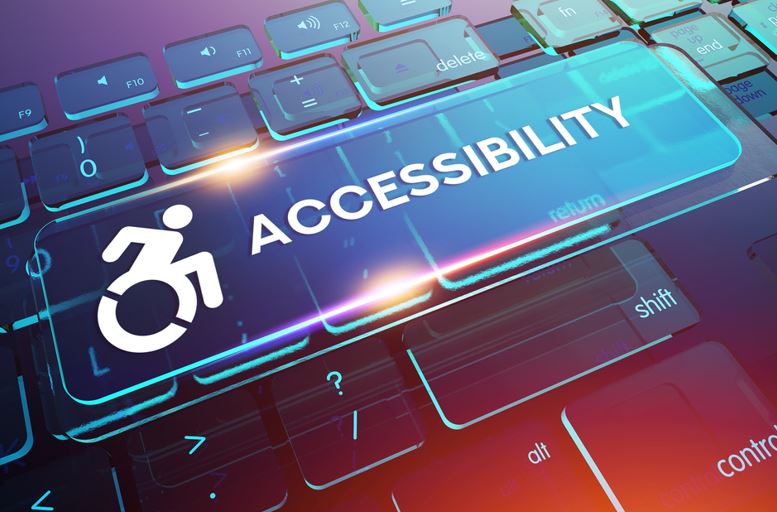The process of ensuring that all individuals, regardless of their abilities or limitations, can use digital products and services is known as digital accessibility. Remember that not everyone uses digital products and services equally, if at all. Some people never make use of them. A blind person, for example, can use a screen reader, whereas a person with a learning disability may need the information presented in a more understandable format.
Making your digital products and services more accessible is not only the right thing to do, but it will also help your business thrive. You will be able to attract a larger audience, including those with disabilities if you make your products and services more accessible to the general public. Furthermore, as more countries enact accessibility-required legislation and regulations, it is becoming increasingly important to ensure that your products and services are accessible.
How Can You Ensure That Your Digital Goods and Services Are Accessible to Everyone?
You should seek professional advice before beginning to create accessible content. The simplest way to ensure that all consumers can access your digital products and services is to design them with accessibility in mind from the start. The first step in the design process is user research, which must continue through the coding phase. At each stage, digital accessibility must be considered. Furthermore, working with accessibility experts to make your designs as user-friendly as possible is required.
Make certain that your content is simple to understand.
Even if it seems obvious, make sure the information you provide is straightforward and simple. This necessitates the elimination of jargon and the use of simple, clear language. It also entails making your material available in other formats, such as audio and video, for those who prefer or are required to consume content in these formats.
Use Caution When Using Images and Videos
Images and videos are great ways to enhance your text and make it easier to read. However, proper use is required to minimize accessibility issues. Include text counterparts for visual material, such as photographs and videos, to ensure that those who cannot see the content can still understand its meaning. Additionally, make sure your photos and videos have enough contrast for people with vision impairments to see.
It may be difficult to ensure that your information and services are available in the digital world, but if you follow these guidelines, you will be able to do so.
What is the Function of Online Accessibility?
Disability is defined by the World Health Organization as “an umbrella term that includes impairments, activity limitations, and participation restrictions.” Physical, sensory, cognitive, mental, and intellectual disabilities are examples of disabilities. Disability is thought to affect one billion people worldwide, making it one of the most common health problems. Despite this, people with disabilities face significant barriers to education, employment, and other critical services. Making digital content and services available to all is one way to overcome these barriers. This includes the development of websites and applications for people with various disabilities, such as those who are deaf or hard of hearing, blind or have low vision, or have cognitive or intellectual disabilities. We can help remove some of the barriers that people with disabilities face by making digital content and services more accessible, allowing them to live full and inclusive lives.
How People with Disabilities Make Use of Digital Content
When it comes to navigating digital information, people with various disabilities face a number of challenges. Screen reader software, for example, may be required to convert text to speech for blind or visually impaired individuals. Captions or subtitles may be required for those who are deaf or hard of hearing to access audio and video content. It may be necessary to simplify the presentation of content for those with cognitive limitations. Furthermore, people with physical disabilities may require access to content that can be accessed via switches or eye-gaze trackers, among other alternate input modalities. Website designers and developers can create digital content that is accessible to a wider audience by taking these various requirements into account.
Creating Designs for the Blind
You should be aware that not everyone interprets the world in the same way when it comes to digital information. Those who are blind or have impaired vision, for example, rely on specific cues to absorb information. As a result, additional considerations must be made when creating digital content for them. For photos, for example, distinct text descriptions must always be used. Captions and audio descriptions should be included in videos. By following these steps, you can ensure that everyone has access to your digital information.
Designing for Deaf People
When creating digital content, it is critical to consider the needs of all potential viewers. Individuals who have difficulty assimilating traditional forms of content, such as those with disabilities, are included. Closed captioning, for example, can make digital content accessible to the deaf and hard of hearing.
A number of factors must be considered when creating digital content with closed captions. First and foremost, the captions must be easy to read and comprehend. This includes using large font sizes and avoiding intricate, difficult-to-read fonts. Furthermore, the subtitles should be synced with the audio track. This can be accomplished by either manually producing the captions or manually transcribing the audio track and using software that automatically generates captions. Finally, reread the captions carefully to ensure that they are error-free.
By following these guidelines, you can create digital content that is accessible to all users. Closed captioning is just one method for making your content more accessible; audio description and sign language interpretation are two others. It is possible to create digital content that appeals to everyone by taking into account the needs of all viewers.
Making For People With Cognitive Impairments
When creating digital content for people with intellectual disabilities, there are several factors to consider. Consider that each person is unique and will necessitate a unique approach. However, there are a few general guidelines that can be followed to improve content accessibility. Disability services, for example, advise using simple language and unambiguous graphics. This may make it easier for the reader to understand the material and reduce misunderstandings. It is critical to provide a variety of involvement and opinion options. Allowing the reader to interact with the content on his or her own terms increases the likelihood of comprehension and retention. By following these guidelines, designers can create digital content that is both accessible and educational for all consumers.
More information about QualityLogic and our digital accessibility tools can be found by clicking here.




